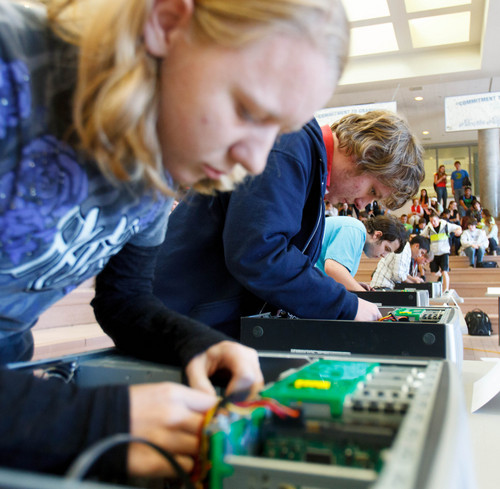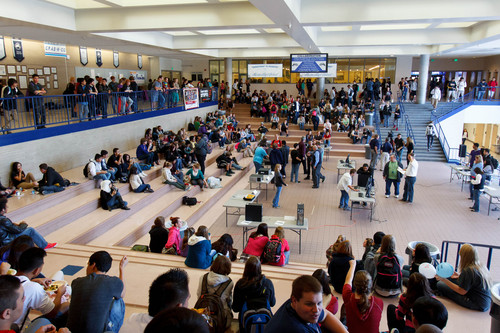This is an archived article that was published on sltrib.com in 2013, and information in the article may be outdated. It is provided only for personal research purposes and may not be reprinted.
Utah's charter schools continue to add students at a faster clip than do traditional schools, contributing to an overall increase of nearly 2 percent — 11,566 students — in public-school enrollment this year.
Utah now has 612,551 public school students, Superintendent of Schools Martell Menlove reported Friday to the Board of Education.
Charter school enrollment rose by 8 percent — slower than last year's 13.2 percent pace of growth — to 54,900. Nearly 9 percent of public school students now attend charters, which are run independently of districts.
For the first time in years, Menlove said, enrollment in kindergarten is lower this year than last, signaling possible slower growth in total student populations in the years to come.
"I don't know if that's the beginning of a trend," he said.
The state's 10 largest districts remained the same, although the order shuffled a bit. Nebo District surpassed Weber District to become the sixth largest. Alpine remained the largest, with 72,419 students, followed by Davis, Granite, Jordan and Canyons.
Jordan District, where voters this week rejected a $495 million bond, was the fastest-growing district in the Salt Lake Valley, even though its growth was slower than the state average, at 1.6 percent.
A district study last summer projected enrollment growth of 12,000 in the next decade. However, growth this year is already slower than projected, with an added 812 students pushing enrollment to 52,855. Jordan had expected 2,000 more students.
Janice Voorhies, secretary of the Jordan school board, said this week that the board will rely heavily on new community-wide committees to sort through the options in the wake of the bond's failure.
However, the district has already taken many of the least wrenching steps — putting children in portable classrooms and going to year-round school, she said.
Solutions may include changing school boundaries, busing children beyond their own neighborhood schools and perhaps going to double sessions, she said.
"I hate to see things have to go to a more and more difficult situation, and I think that's what's coming," Voorhies said. " It's pretty bad when you send your kindergartner out at 6:30 in the morning or get your kindergartner home at 6:30 at night in the winter."
Jordan, like the rest of the state, continues to see increasing diversity among its students.
The percentage of ethnic minority students rose to 23.5 percent statewide this year, with Latinos comprising the largest minority group at nearly 16 percent of all Utah students.
Salt Lake has the highest ethnic minority population — nearly 59 percent — followed by San Juan at 57 percent, Ogden at nearly 55 percent, Granite at just over 42 percent and Logan at more than 34 percent.
More than a third of Utah students are considered low-income, as measured by their qualification for free and reduced price lunches. In charter schools alone, 30 percent of children are considered low-income.
Ogden has a higher percentage of low-income students than any other district, at more than 75 percent. Piute is next at nearly 74 percent, San Juan at 68 percent, Salt Lake at 63 percent and Logan at more than 61 percent.
Ben Horsley, spokesman for the Granite District, the largest district in the Salt Lake Valley, said the district's growth has slowed enough — it was less than 1 percent this year — that it turned 14 elementaries back to traditional rather than year-round schedules.
The district still has challenges, though, in educating those students who are just learning English as well as low-income students.
Nearly half of the district's students are ethnic minorities, and many, including a rising number of refugees, are still learning English.
The biggest challenge for educators is engaging parents, and that's particularly hard in low-income families in which both parents work, and often more than one job, he said.
About 22 percent of Granite students are from low-income homes.
Twitter: @KristenMoulton











